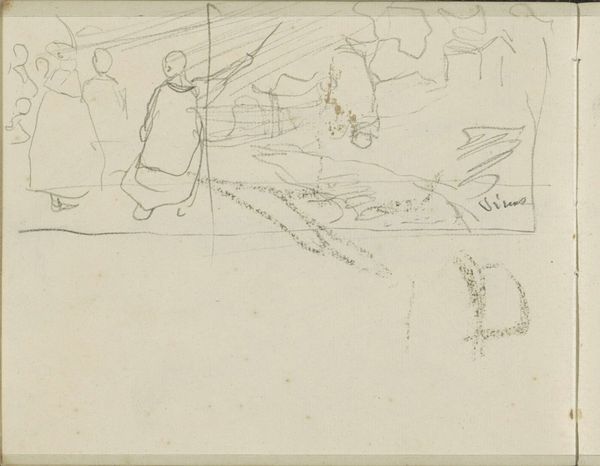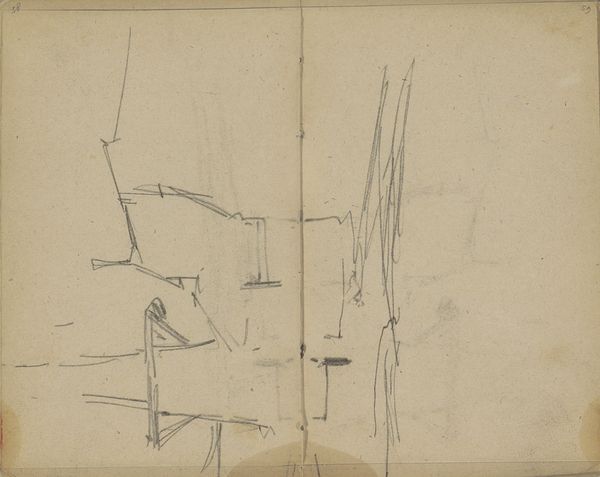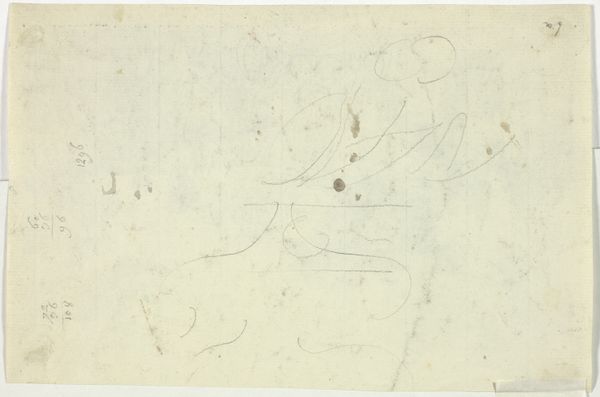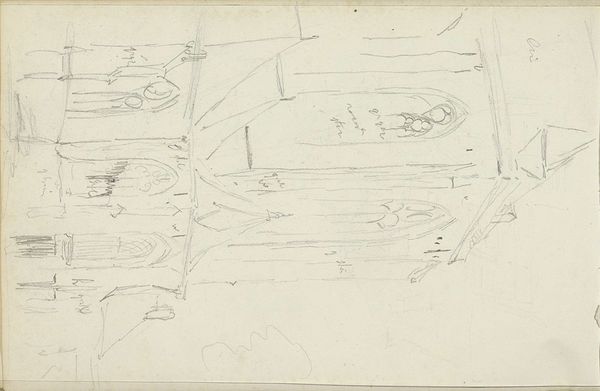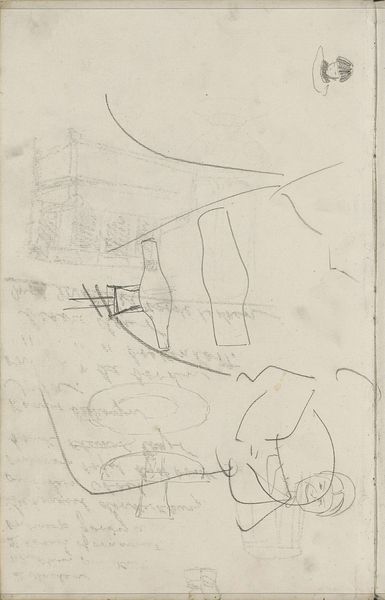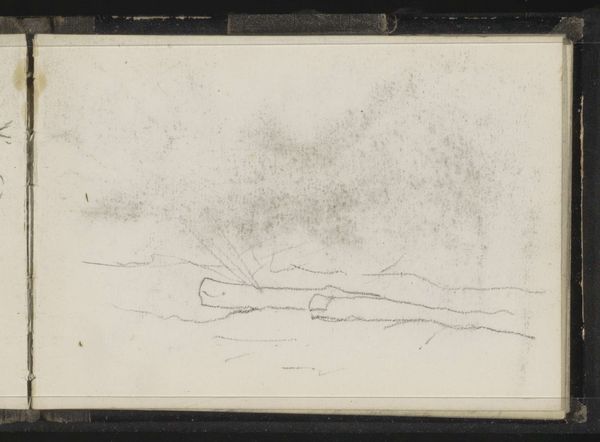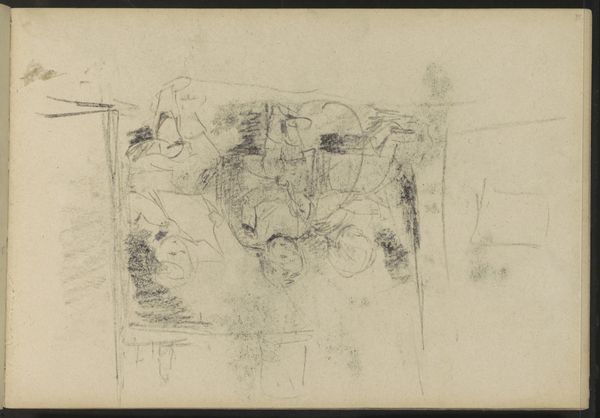
drawing, paper, pencil
#
drawing
#
paper
#
geometric
#
pencil
#
abstraction
#
line
Dimensions: height 136 mm, width 190 mm
Copyright: Rijks Museum: Open Domain
Curator: This intriguing drawing is a piece called "Studie," created sometime between 1870 and 1923 by Willem Witsen. It's a pencil drawing on paper, here in the Rijksmuseum collection. Editor: It looks almost like an archaeologist’s initial sketch of a dig site—minimal, functional. I wonder if there's a correlation between art-making and a will to excavate meaning. Curator: Absolutely! There’s something about the ephemeral quality of pencil on paper that lends itself to this sort of free-flowing exploration, this constant editing. Editor: There’s definitely an immediacy that stands out—Witsen’s process is really laid bare here, in his visible corrections. I mean, what can we read into these simple shapes? The overlapping lines—and the tension between the circles and the sort of cross-like figure? Curator: Perhaps an artist wrestling with form itself? It certainly feels like a mind at play, mapping something out, searching for an arrangement that satisfies. There’s also a really beautiful balance between the geometric elements and what feels like more intuitive markings. It almost reads as a synthesis of internal architecture and observation. Editor: The period of its making is fascinating too. Witsen created this around a time that there was much greater focus on challenging rigid social structures and power dynamics and also a shift to new approaches to social progress and collective emancipation. Can you speak on abstraction as a choice? What do we know about the abstraction shown in this piece relative to Witsen's world at the time? Curator: Exactly, he embraced a non-objective vocabulary which was relatively cutting-edge. Rather than illustrating tangible things, Witsen seems more intent on rendering the essence of form. Perhaps abstraction allows an artist to strip away the surface details and tap into something more primal, or fundamental, to understanding our shared visual language. Editor: Perhaps even dismantling or at least questioning the established conventions and assumptions, challenging how we perceive reality, how it is represented, and how we communicate ideas about art in a time of much social upheaval. Thanks for the insights! Curator: Likewise! This really lets us see into an artist's creative processing in such a direct way.
Comments
No comments
Be the first to comment and join the conversation on the ultimate creative platform.





